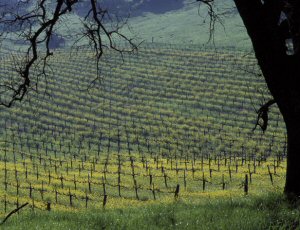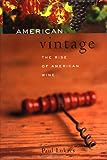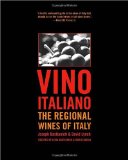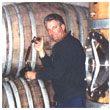
We're an all volunteer website and need your help to keep going. Here are five ways you can contribute: 1 Donate 2 Buy something 3 Submit a story 4 Volunteer 5 Advertise

New in the gift shop, virtualitalia.com logo wear and use items! 
|
PLEASE NOTE: We are experiencing unexpected
technical difficulties caused by our web host. We apologize for
the inconvenience. During your visit you may experience service
and page interruptions - we are in the process of fixing everything and hope to be
fully back on our feet soon.
[an error occurred while processing this directive]
california vs. italian wines
A lot of this difference has to do with climate and soil. California has more moderate weather and younger, richer soils than Italy, so our grapevines grow vigorously, producing abundant foliage and full-flavored fruit with higher sugar levels. As a result, California wines tend to be full and fruity, with bold flavors and higher alcohol content. In Italy, grapes grow more slowly since the weather is cooler and soils are often rocky and low in nutrients. Consequently, Italian varietals, reds in particular, are more understated and subtle than their California cousins, with earthy flavors and lower alcohol levels.
Switching to a more Italian style of grape growing and winemaking takes time, and the challenges we face are tremendous. Due to California�s rich soils and warm weather, we are constantly battling the vigor of our vines. However, as our vines mature and their roots spread, we are finding that desirable earthy flavors are increasing. We have traveled extensively in Italy to learn old world winemaking techniques, yet there�s no simple recipe to follow to duplicate what the Italians have been doing for centuries. We are fortunate, however, to have a heritage of Italian winemaking in our blood. For more than 500 years, Sebastianis have been crafting Italian wines in the tiny Tuscan village of Farneta. Now, the California branch of the family is doing the very same thing right here in Sonoma. As Viansa evolves in the coming years, we don�t plan to increase the volume of wine we produce but rather to continuously raise the level of quality. We will reduce the number of wines that we make while refining our techniques with the remaining varietals. Toward this end, we have imported the large, tight-grained barrels Italians prefer so that the fruit flavors of our wines aren�t overwhelmed by wood like so many California wines. We have plans to build caves in our hill, much like those at many Italian wineries. Caves have naturally high humidity (85%), so that as the wines age, alcohol evaporates from the barrels rather than water. Ultimately, our wines will have slightly reduced alcohol content, similar to Italian wines. Alcohol, of course, is necessary since it serves to preserve the wine, but too much alcohol can also mask flavors. As the alcohol content of our wines creeps downward, you�ll no doubt notice increased flavors as our wines begin to taste more Italian.
about the author |
© 1998-2005 by virtualitalia.com unless otherwise noted
 Americans visiting Italy are often surprised when they sample Italian wines. Not only are they unfamiliar with the array of different varietals, but many Americans are also shocked to discover that Italian wines actually taste different. Wines in Italy are often lighter, less oaky and more crisp and acidic than the California wines many of us are used to.
Americans visiting Italy are often surprised when they sample Italian wines. Not only are they unfamiliar with the array of different varietals, but many Americans are also shocked to discover that Italian wines actually taste different. Wines in Italy are often lighter, less oaky and more crisp and acidic than the California wines many of us are used to. 

 A third-generation Sonoma Valley winemaker, Sam Sebastiani was born and raised in the heart of Sonoma. He spent his early years learning viticulture and enology from his father, August Sebastiani (1913-1980), a renowned California winemaker.
Founded in 1989 by Sam and Vicki Sebastiani, Viansa is their vehicle to share their love of good food, wine and their Italian heritage with visitors from around the world. Dedicated to the marriage of wine and food, Viansa (short for "Vicki and Sam") offers visitors a taste of Tuscany in Sonoma Valley. Today, this family-owned and operated winery is proud to be the premier producer of Italian varietals in the United States!
A third-generation Sonoma Valley winemaker, Sam Sebastiani was born and raised in the heart of Sonoma. He spent his early years learning viticulture and enology from his father, August Sebastiani (1913-1980), a renowned California winemaker.
Founded in 1989 by Sam and Vicki Sebastiani, Viansa is their vehicle to share their love of good food, wine and their Italian heritage with visitors from around the world. Dedicated to the marriage of wine and food, Viansa (short for "Vicki and Sam") offers visitors a taste of Tuscany in Sonoma Valley. Today, this family-owned and operated winery is proud to be the premier producer of Italian varietals in the United States!